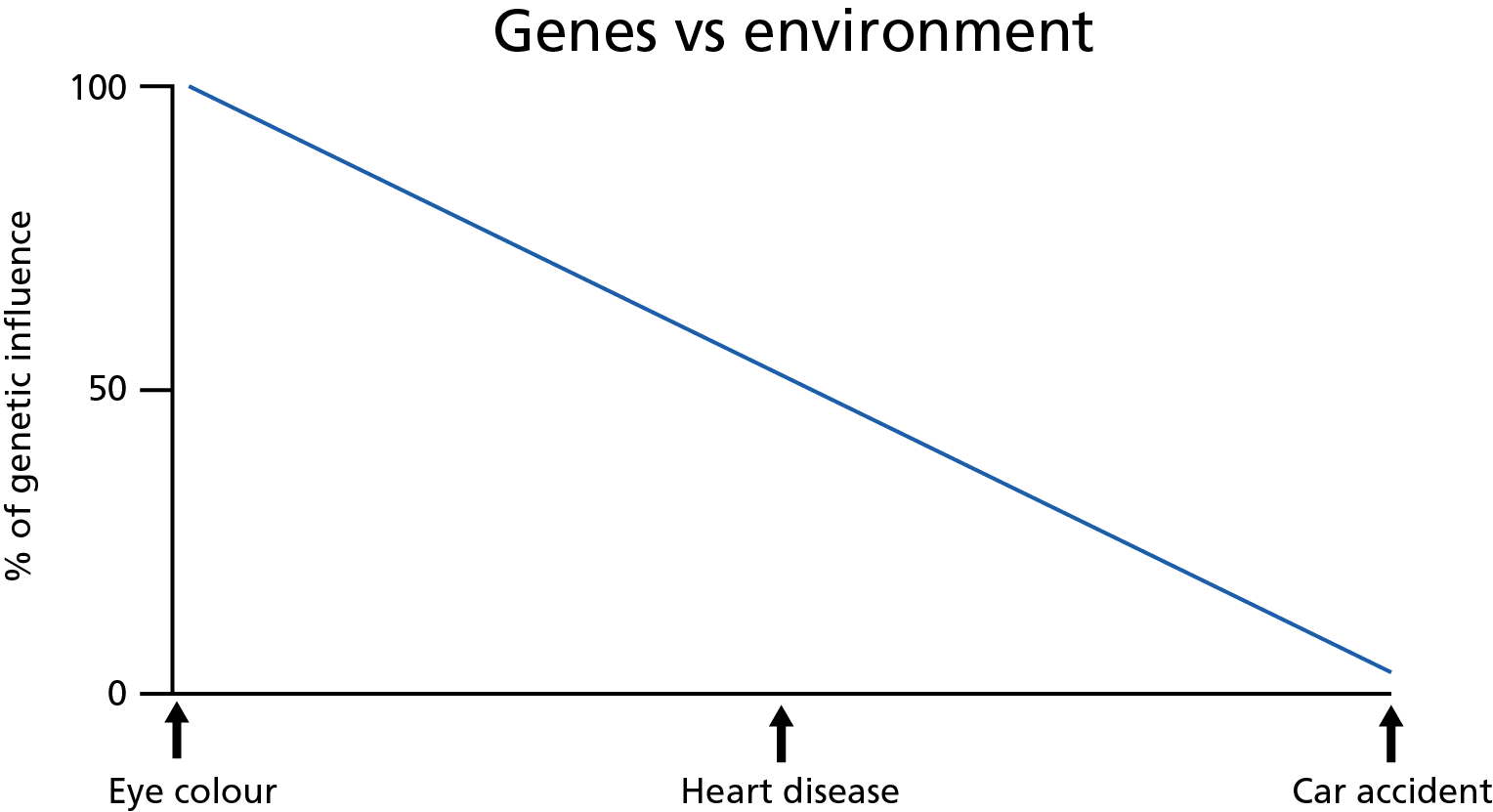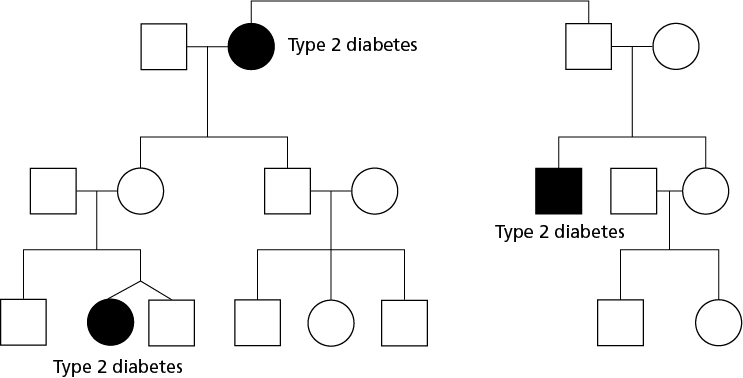Multifactorial conditions
A multifactorial condition is the result of multiple genetic and environmental factors interacting. In clinical practice, most conditions seen will fall under the umbrella term of multifactorial conditions.
Genes and environment
A common misconception is that single genes exist for specific traits, such as height or eye colour. In fact, the majority of traits are determined by multiple genes, combined with their interaction with the environment.
Similarly, many health disorders, such as heart disease and diabetes, are thought to be caused by the interplay of genetic, environmental and lifestyle factors (see figure 1).

Figure 1: The continuum of influence of genes and environment.
Figure 1 shows the continuum of genetic influence, from eye colour, which is 100% genetic, to a car accident, which is 100% environmental. As an example, heart disease is somewhere in the middle, with contributions from both genes and the environment.
Complex patterns of inheritance
These types of conditions are less likely to follow a simple pattern of inheritance but often show clustering in a family (see figure 2). These conditions are referred to as ‘multifactorial’ or ‘polygenic’ conditions. Multifactorial conditions require multiple genetic and environmental factors in order to manifest any signs or symptoms of the condition, while polygenic only includes multiple genetic factors.
Due to this complexity, it’s difficult to estimate the chance that a particular family member will develop the condition. For example, type 2 diabetes has been associated with at least 150 DNA variants and these are likely to act with lifestyle factors, such as diet and physical activity, to determine how the condition will present in an individual.

Figure 2: Genetic family history showing unclear inheritance of type 2 diabetes.
The future
Currently, the genetic factors for most multifactorial conditions are not well defined. Therefore, preventative interventions focus on the environmental factors, with the same recommendations given to everyone.
In the future, it is anticipated that, by better understanding the genetic factors that contribute to the development of these conditions, individuals can have their chance of developing a multifactorial disease more accurately assessed. This will allow those at high risk to take more rigorous measures than those at lower risk.
Key messages
- Most health conditions encountered in practice are the result of the interplay of multiple genetic, environmental and lifestyle factors.
- Multifactorial conditions develop as a result of multiple genetic and environmental factors.
- Polygenic conditions develop as a result of multiple genetic factors.
Resources
For clinicians
- MedlinePlus: Type 2 diabetes
- NHS England Genomics Education Programme: Genomics 101: Dominant, Recessive and Beyond